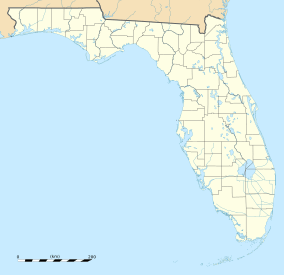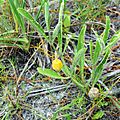Honeymoon Island State Park facts for kids
Quick facts for kids Honeymoon Island State Park |
|
|---|---|
|
IUCN Category IV (Habitat/Species Management Area)
|
|

View of the Gulf of Mexico from the shoreline
|
|
| Location | Pinellas County, Florida, USA |
| Nearest city | Dunedin, Florida |
| Area | 2,785 acres (11.27 km2) |
| Governing body | Florida Department of Environmental Protection |
Honeymoon Island State Park is a super popular state park in Florida! It's on a special barrier island called Honeymoon Island. This island is right across the water from towns like Dunedin and Palm Harbor. The park is huge, covering about 385 acres of land and 2400 acres of water, with 4 miles of beautiful beach. It's easy to find at the end of Causeway Boulevard. More than a million people visit this park every year, making it the most visited state park in Florida!
Contents
Island History and Name Changes
Honeymoon Island and its neighbor, Caladesi Island, were once part of a single, larger island. But in 1921, a big hurricane hit the area. This powerful storm split the island into two separate parts. The water channel created by the hurricane is now known as Hurricane Pass.
How Honeymoon Island Got Its Name
In the early 1940s, this island became famous across America. News reports and magazines showed pictures of it, promising a perfect getaway for newlyweds. Back then, the island was actually called Hog Island.
Small, cozy huts were built on the island, just for couples on their honeymoon. This is how Hog Island got its new, romantic name: Honeymoon Island! However, when World War II started, these little huts were no longer used. Over time, the weather wore them down.
Protecting the Island
In the 1960s, a builder wanted to make the island much bigger. They planned to build many homes there. A road, called a causeway, was built in 1964 to connect the island to the mainland.
But in 1969, the builder's plan was stopped. The state of Florida decided to protect the island instead. In 1974, the state bought most of the island. Soon after, they bought the rest of it. Finally, on December 7, 1981, Honeymoon Island officially became a state park.
Getting to Caladesi Island
From Honeymoon Island, you can take a ferry across Hurricane Pass to Caladesi Island. This ferry makes it easy for visitors to explore both islands. People can also walk to Caladesi Island from Clearwater Beach, Florida, which has been possible for many years.
Amazing Animals and Plants
Honeymoon Island State Park is a safe home for many different kinds of plants and animals. You can find tall Florida slash pines and mangroves here. The park also protects several threatened and endangered species.
Birds and Sea Creatures
Many birds live on the island or stop there during their long journeys in spring and fall. You might see Osprey flying overhead, or different types of tern, plover, herons, and other wading birds near the water.
If you look out into the Gulf of Mexico, you might even spot groups of dolphins swimming close to the shore! On the beach, it's common to find starfish and other cool marine invertebrates like crabs and shells.
Special Island Residents
In the fall of 2008, a pair of bald eagles built a nest on the Osprey Trail in the park. These majestic birds are a wonderful sight to see!
It's good to know that Mosquitoes are common on Honeymoon Island, especially during certain times of the year. Also, some rattlesnakes live on the island, so it's important to stay on marked trails and be aware of your surroundings.
Fun Things to Do
Honeymoon Island State Park offers many exciting activities for visitors. You can enjoy birding (watching birds), fishing, hiking on nature trails, and relaxing in the sun on the beach.
Park Amenities and Trails
The park has lots of helpful things for visitors. There are picnic pavilions where you can eat, bathhouses, and a park concession where you can buy snacks and drinks.
You can explore the island on its nature trails and find special areas for watching birds. There's even a beach just for pets! A passenger ferry can take you to Caladesi Island State Park for more adventure. The Rotary Centennial Nature Center has cool exhibits about the history of Honeymoon and Caladesi Islands. It also has a high observation deck for great views.
There are two main hiking trails:
- The Osprey Trail is 2 miles long.
- The Pelican Cove Trail is 3/4 miles long.
On these trails, you can see palmetto trees, slash pine, and maybe even the eagle nest. On the Pelican Cove Trail, you might spot some sea life and wading birds in the water.
Beach Fun and Features
The beaches on Honeymoon Island are beautiful, but they can be different in different spots. Some areas are sandy, while others have large pieces of fossilized coral. Sometimes, you might find puddles of water on the beach that have a strong smell during certain months. But this doesn't stop people from enjoying a swim!
About 10 miles off the coast, there's a special underwater memorial called the Circle of Heroes. It honors veterans.
Visiting the Park
Florida state parks are open every day of the year, including holidays. You can visit from 8 a.m. until sundown.
Entrance Fees and Ferry Cost
When you arrive, you'll see signs about the entrance fee. As of February 2015, it costs $8 per vehicle. However, if you are visiting alone, it's only $4. If you plan to visit often, you can buy an annual pass to save money.
If you want to take the ferry to Caladesi Island, there's an extra charge. It costs $14 per adult, in addition to the park entrance fee.
Food and Drinks
Honeymoon Island has two places where you can buy food and drinks:
- Café Honeymoon
- The South Beach Pavilion
Gallery
-
Coastal vegetation, with gullfeed in foreground
-
Slash pine and palmetto
-
Cattail-filled, coastal swale
-
Wild privet berries























